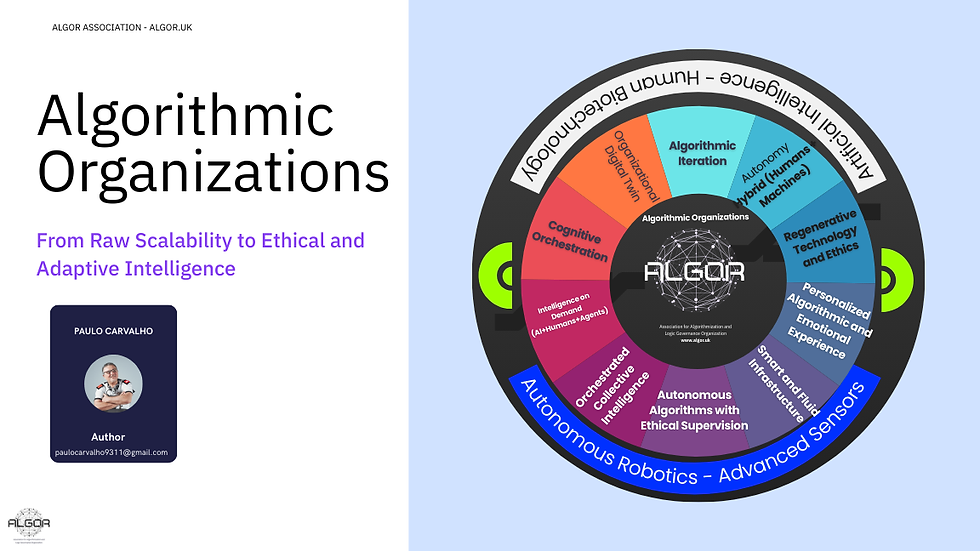AI’s Nuclear Renaissance
- Time ALGOR

- Jun 2
- 3 min read

In 2021, we noticed an interesting sign: Microsoft was posting job openings for nuclear engineers. At the time, the rationale was unclear. But by November 2022, when ChatGPT launched, the connection became obvious: AI consumes enormous amounts of energy, and nuclear power is a sustainable and efficient solution for powering the data centers that power it. Since then, Microsoft, Google, and Amazon have all unveiled deals to support advanced nuclear energy. Google has announced plans to buy electricity from reactors developed by Kairos Power, while Amazon is investing $500 million in X-Energy Reactor Co., with the intention of using its reactors in Washington state. Crosoft, meanwhile, has reopened an 800 MW nuclear plant in Pennsylvania and signed several deals to secure nuclear power for its data centers. Nuclear power’s reliability, low emissions, and ability to provide power at scale make it an attractive choice for technology companies looking to meet growing energy demands. Small modular reactors (SMRs) are emerging as a promising option. Amazon is partnering with Dominion Energy to develop an SMR in Virginia, and Google has committed to purchasing capacity from Kairos Power. Oracle is planning a gigawatt-scale data center powered by three SMRs, and companies including Equinix and Wyoming Hyperscale have signed deals with SMR providers like Oklo. Despite the enthusiasm, significant challenges remain. Large-scale nuclear construction is costly and time-consuming — the Vogtle plant, which began operations in 2023, was the first U.S. civilian plant built in 30 years. SMRs face delays in permitting, proven scalability, and legal complications for “behind-the-meter” energy production, such as state-level utility registration requirements. Furthermore, scaling clean energy will require substantial investment in emerging technologies. While the AI nuclear renaissance is underway, overcoming these barriers will be essential to fully realize its potential.
Strategic planning for adopting AI with the support of nuclear energy
Your company is about to scale generative AI solutions, such as highly complex predictive models that require intensive and continuous processing. Instead of just consuming cloud services, you plan to deploy your own servers or hire dedicated infrastructure. In this scenario, the challenge arises: how to guarantee sufficient, reliable and clean energy?
Companies such as Microsoft and Amazon have already responded to this question by investing in partnerships with nuclear plants and small modular reactors (SMRs) to power their data centers. This reveals a strategic trend: integrating energy planning into the AI strategy.
Following the logic of ISO 42001, your company should consider:
• Operational and regulatory risks of relying on unstable or fluctuating energy sources.
• Opportunities for differentiation through commitments to low-emission energy.
• Decisions driven by algorithmic impact: scaling AI requires scaling infrastructure, which requires planning, before automating.
Even if your organization doesn’t build power plants, thinking about the source and stability of the energy used in your AI projects is now an essential part of responsible governance of digital transformation.
Estimated cost of an SMR (2024)
Project Type | Approximate Cost (USD) |
Early stage commercial SMRs | US$1 to 2 billion per unit |
Pilot or consortium projects | US$300 to 600 million (partial or subsidized) |
Cost per MW (estimated) | US$5,000 to US$10,000 per kW ($5–10 million per MW) |
Real Examples:
• NuScale Power (USA): its 77 MW SMR module was initially budgeted at US$5.3 billion for a set of 6 units (462 MW), but was revised upwards due to regulatory and engineering costs.
• X-Energy (Amazon): initial investment of US$500 million with the expectation of a competitive cost for modular supply.
• Kairos Power (Google): values not yet publicly disclosed, but the model seeks to reduce costs with standardized production and molten salt reactors.
Observations:
• Unit costs tend to fall with standardization and scale of production.
• Many projects depend on public subsidies and partnerships with technology companies to make them viable.
• Licensing, security and integration costs to the electricity grid can represent up to 30–40% of the total.




Comments